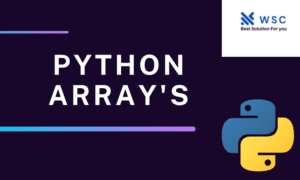Introduction
Artificial intelligence has made remarkable strides in replicating human abilities, and one of its most impressive feats is object detection. This technology allows machines to identify and locate objects within images or video frames. In this article, we will delve into the fascinating world of thing detection in artificial intelligence, exploring its significance, techniques, applications, and future prospects.
Understanding Object Detection
Object detection is a subset of computer vision, which focuses on enabling machines to interpret and understand visual data. At its core, thing detection involves recognizing and delineating objects within an image or video stream. But why is this important?
Importance of Object Detection
Object detection serves as the foundation for various AI-driven applications. Here’s why it matters:
- Autonomous Vehicles: thing detection enables self-driving cars to identify pedestrians, vehicles, and obstacles, ensuring safe navigation.
- Security Systems: Surveillance cameras use object detection to identify suspicious activities, intruders, and unauthorized access.
- Medical Imaging: In healthcare, object detection aids in the diagnosis of diseases by identifying abnormalities in medical images.
- Retail: Object detection enhances shopping experiences by tracking inventory and monitoring customer behavior.
Techniques in Object Detection
To achieve accurate thing detection, various techniques are employed. These techniques can be broadly categorized into two types: traditional methods and deep learning-based approaches.
Traditional Methods
Traditional methods rely on handcrafted features and algorithms. While they are less complex than deep learning, they often require extensive manual tuning. Some common traditional techniques include:
- Histogram of Oriented Gradients (HOG): This technique focuses on object shape and edge information.
- Haar Cascades: Haar-like features are used to detect objects.
Deep Learning Approaches
Deep learning has revolutionized object detection. Convolutional Neural Networks (CNNs) have proven highly effective in this domain. Popular deep learning models for thing detection include:
- Faster R-CNN: Combines CNNs with Region Proposal Networks for precise object localization.
- YOLO (You Only Look Once): Offers real-time thing detection by dividing the image into a grid and predicting bounding boxes and class probabilities.
Applications
thing detection is ubiquitous across various industries, opening doors to numerous applications:
- Retail: Automated checkout systems, inventory management, and shelf optimization.
- Healthcare: Disease diagnosis, organ segmentation, and surgery assistance.
- Security: Facial recognition, intrusion detection, and object tracking.
- Autonomous Systems: Self-driving cars, drones, and robotics.
The Future of Object Detection
As technology advances, thing detection will continue to evolve. Here are some exciting developments on the horizon:
- Improved Accuracy: Deep learning models will become more accurate, reducing false positives and negatives.
- Real-time Processing: Faster and more efficient algorithms will enable real-time thing detection in resource-constrained environments.
- Multimodal Detection: AI systems will be capable of detecting objects in various data types, including 3D, thermal, and multispectral imagery.
- Customization: Tailored thing detection models for specific industries and applications will become more accessible.
import cv2
# Load the pre-trained face detection model
face_cascade = cv2.CascadeClassifier('haarcascade_frontalface_default.xml')
# Load an image for detection
image = cv2.imread('your_image.jpg')
# Convert the image to grayscale for processing
gray = cv2.cvtColor(image, cv2.COLOR_BGR2GRAY)
# Perform face detection
faces = face_cascade.detectMultiScale(gray, scaleFactor=1.3, minNeighbors=5, minSize=(30, 30))
# Draw rectangles around detected faces
for (x, y, w, h) in faces:
cv2.rectangle(image, (x, y), (x + w, y + h), (0, 255, 0), 2)
# Display the image with detected faces
cv2.imshow('Object Detection', image)
cv2.waitKey(0)
cv2.destroyAllWindows()
Make sure to replace 'your_image.jpg' with the path to the image you want to test. This code utilizes the Haar Cascade classifier for face detection, but you can explore other object detection techniques mentioned in the article for different objects and scenarios.
Conclusion
thing detection in artificial intelligence is a cornerstone technology with far-reaching implications. Its applications are diverse, from enhancing our daily lives through autonomous systems to improving security and healthcare. As we continue to refine and expand our understanding of object detection, we unlock new possibilities for AI-driven solutions.
Frequently Asked Questions
- What is the primary goal of object detection in AI?
- Object detection in AI aims to locate and classify objects within images or video frames, enabling machines to understand their surroundings.
- How does deep learning contribute to object detection?
- Deep learning, particularly CNNs, has significantly improved thing detection accuracy by automating feature extraction and classification.
- Are there privacy concerns related to object detection technology?
- Yes, privacy concerns exist, especially in applications like facial recognition. Proper regulations and ethical considerations are essential to address these issues.
- What industries benefit the most from object detection technology?
- Industries such as healthcare, retail, security, and autonomous systems have witnessed substantial benefits from thing detection technology.
Check our tools website Word count
Check our tools website check More tutorial




